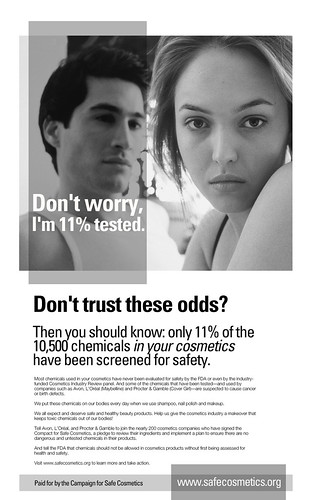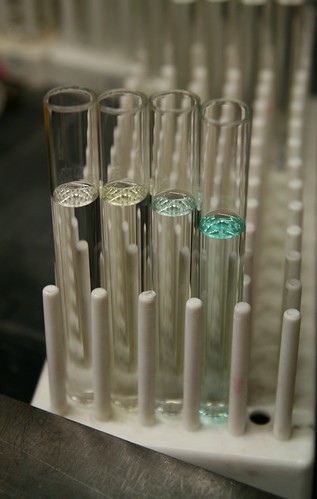 ...or at home...
...or at home... ... we celebrate and remember those who have given their lives so that we may live and be free.
... we celebrate and remember those who have given their lives so that we may live and be free. ...or at home...
...or at home... ... we celebrate and remember those who have given their lives so that we may live and be free.
... we celebrate and remember those who have given their lives so that we may live and be free. You might be a brain tumor if you...
You might be a brain tumor if you... Image credit: A6U571N
Image credit: A6U571N As the picture on the right demonstrates, all geeks are NOT created equal. While some may display a healthy interest in math and science, others cover their bodies in tattoos of Boba Fett or the Linix penguin and would happily wait in line for two days for a new iProduct. Well, today is the day to embrace your inner geek, no matter where you fall on the nerd spectrum. May 25th has officially been declared Geek Pride Day and organized events are scheduled from Calgary to Tel Aviv.
As the picture on the right demonstrates, all geeks are NOT created equal. While some may display a healthy interest in math and science, others cover their bodies in tattoos of Boba Fett or the Linix penguin and would happily wait in line for two days for a new iProduct. Well, today is the day to embrace your inner geek, no matter where you fall on the nerd spectrum. May 25th has officially been declared Geek Pride Day and organized events are scheduled from Calgary to Tel Aviv. The Spanish seem particularly engaged in geekdom. They not only organized a 300 person human pacman in Madrid last year, but in 2006 went as far as adopting an official Geek Manifesto (in English). The Rights and Responsibilities of a Geek outlined in the Manifesto can be found below.
The Spanish seem particularly engaged in geekdom. They not only organized a 300 person human pacman in Madrid last year, but in 2006 went as far as adopting an official Geek Manifesto (in English). The Rights and Responsibilities of a Geek outlined in the Manifesto can be found below. Geek Responsibilities:
Geek Responsibilities:"My Pokemon brings all the nerds to the yard, and they're like you wanna trade cards? Darn right, I wanna trade cards. I'll trade this but not my charizard."Happy Nerd/Geek Pride day everyone!
 Along with public opinion and advocacy, research is another important driver of policy decisions. Research is the an essential tool for the identification of safe alternatives for chemicals in commerce that are a health concern. Efforts by scientists in areas such as green chemistry aim to design new chemicals that have little to no negative effects on our health.
Along with public opinion and advocacy, research is another important driver of policy decisions. Research is the an essential tool for the identification of safe alternatives for chemicals in commerce that are a health concern. Efforts by scientists in areas such as green chemistry aim to design new chemicals that have little to no negative effects on our health.
 The$86 billion dollar America COMPETES Act succumbs to political tactics and is ridiculously derailed by an amendment about pornography. Apparently, since some federal employees view pornography at work, America should not stay competitive in science and engineering research.
The$86 billion dollar America COMPETES Act succumbs to political tactics and is ridiculously derailed by an amendment about pornography. Apparently, since some federal employees view pornography at work, America should not stay competitive in science and engineering research. Transportation Secretary Ray LaHood joined Oprah Winfrey in warning that the increasing popularity of high tech toys being used while driving is making U.S. roads far more dangerous. To put it in perspective, in 2008 there were an estimated 6k deaths attributed to distracted drivers , while in the same year annual drunk driving fatalities were at 11.7k.
Transportation Secretary Ray LaHood joined Oprah Winfrey in warning that the increasing popularity of high tech toys being used while driving is making U.S. roads far more dangerous. To put it in perspective, in 2008 there were an estimated 6k deaths attributed to distracted drivers , while in the same year annual drunk driving fatalities were at 11.7k. After re-reading Steve Alten's Meg on the metro last week, this article on Megalodon teeth captured Heather's eye. (They're seriously making a movie?)
After re-reading Steve Alten's Meg on the metro last week, this article on Megalodon teeth captured Heather's eye. (They're seriously making a movie?) Image credit: Campaign for Safe Cosmetics
Image credit: Campaign for Safe Cosmetics Yesterday, we started sharing some of the themes captured by your New Voices bloggers at the AAAS Science & Technology Policy Forum. Today we continue by sharing our notes from two of Friday's sessions.
Yesterday, we started sharing some of the themes captured by your New Voices bloggers at the AAAS Science & Technology Policy Forum. Today we continue by sharing our notes from two of Friday's sessions.- Promote science & technology education
- Increase innovation spending
- Promote industry clusters & centers of excellence
- Remove bureaucratic barriers
- Promote intellectual property protections
 Two of your New Voices bloggers were at the AAAS Science & Technology Policy Forum last week to hear the latest policy news on issues in the scientific community. There was a ton of information shared over the two days, so we're breaking it down into three segments for you: day 1, day 2, and the William D. Carey lecture. (A full agenda is available for more details.)
Two of your New Voices bloggers were at the AAAS Science & Technology Policy Forum last week to hear the latest policy news on issues in the scientific community. There was a ton of information shared over the two days, so we're breaking it down into three segments for you: day 1, day 2, and the William D. Carey lecture. (A full agenda is available for more details.) In honor of Stars & Stripes Forever Day and Armed Forces Day (both this weekend), we're taking a look at the Smithsonian's preservation project of the Star Spangled Banner. Seeing the staff work on the massive flag was the highlight of my first visit to the National American History Museum. Keeping this national treasure in good shape for future generations takes much more than fancy stitching skills.
In honor of Stars & Stripes Forever Day and Armed Forces Day (both this weekend), we're taking a look at the Smithsonian's preservation project of the Star Spangled Banner. Seeing the staff work on the massive flag was the highlight of my first visit to the National American History Museum. Keeping this national treasure in good shape for future generations takes much more than fancy stitching skills. Some fun facts:
Some fun facts: Image credit: Echoey13
Image credit: Echoey13

 Exposures to endocrine disrupting chemicals (EDC) are a particular concern for children. Because children are developing rapidly, hormone disruption can have a greater impact; resulting in chronic health problems or making children susceptible to the development of illnesses later in life.
Exposures to endocrine disrupting chemicals (EDC) are a particular concern for children. Because children are developing rapidly, hormone disruption can have a greater impact; resulting in chronic health problems or making children susceptible to the development of illnesses later in life. The famous adage the "dose makes the poison" describes the assumption toxicologists use when determining safe chemical exposure levels. Toxicology studies currently assume that a greater dose, or exposure level, will produce a greater effect.
The famous adage the "dose makes the poison" describes the assumption toxicologists use when determining safe chemical exposure levels. Toxicology studies currently assume that a greater dose, or exposure level, will produce a greater effect. Today, obesity is the fastest rising health concern in the U.S. Obesity is a problem that people have tried to use both diet and exercise to combat, yet a growing body of research is suggesting there is another component of this problem, our exposure to environmental chemicals.
Today, obesity is the fastest rising health concern in the U.S. Obesity is a problem that people have tried to use both diet and exercise to combat, yet a growing body of research is suggesting there is another component of this problem, our exposure to environmental chemicals. One EDC you may have heard about recently is Bisphenol-A (BPA). BPA has been used for years in the production of reusable water bottles and baby bottles, but now many companies are now offering BPA-free products.
One EDC you may have heard about recently is Bisphenol-A (BPA). BPA has been used for years in the production of reusable water bottles and baby bottles, but now many companies are now offering BPA-free products.The impact of environmental chemicals on health is becoming a defining concern of this century. I’m sure you’ve seen the increasing number of articles published by the mainstream media questioning the safety of chemicals in consumer products, like plastics. Research has shown that these chemicals are getting into our bodies and can mimic our hormones.
Hormones are signals that regulate biological processes by communicating messages to cells. Hormones bind to a receptor like a key fits into a specific lock, which tells the cell to carry out a specific action.
One example is human growth hormone. As children, growth hormone is released in our body to tell limbs and organs to grow. But when we become our adult size, our body stops releasing the growth hormone, so the cells are no longer receiving the message to grow. Hormones are regulated by a group of glands called the endocrine system.

 Yesterday, Sarah wrote about how removing lead from gasoline decreased air pollution and improved health. While lead is no longer a threat, there are still plenty of chemicals in the air. Interested to see how your city and state are doing? Check out this project by the American Lung Association, which details (and grades!) cities and counties based on ozone and particle pollution.
Yesterday, Sarah wrote about how removing lead from gasoline decreased air pollution and improved health. While lead is no longer a threat, there are still plenty of chemicals in the air. Interested to see how your city and state are doing? Check out this project by the American Lung Association, which details (and grades!) cities and counties based on ozone and particle pollution.With continued investment in research and the work at the National Institutes of Health’s National Institute of Environmental Health Sciences, the Centers for Disease Control and Prevention and other government agencies, we can continue to find the answers we need to improve the quality of air we breathe.